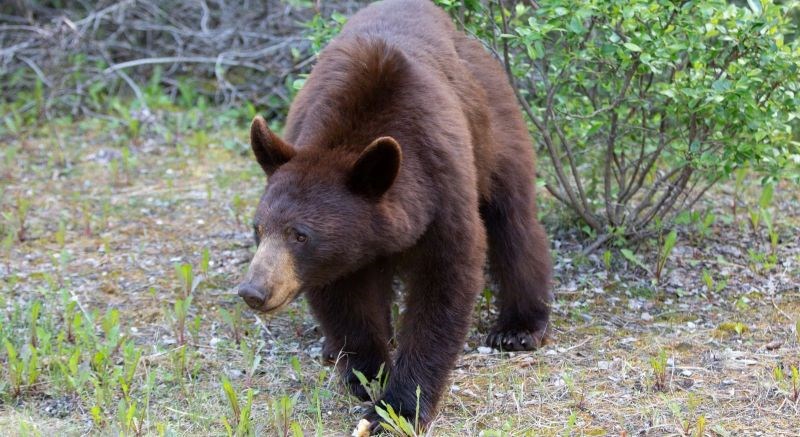
Peter Shokeir | [email protected]
Visitors and residents should expect to encounter wildlife in Jasper National Park as spring begins and animals become more active.
Bear activity
Several black bears have already been spotted around the Athabasca Valley, and grizzly bears are expected soon.
“Grizzly bears are just starting to move down valley, so we’re starting to see the juveniles,” said Steve Malcolm, the park’s lead human-wildlife coexistence specialist.
A sibling set of grizzlies is currently at Talbot Lake and are believed to have come from the Rocky River drainage where they were denning.
“We’re struggling to keep that group from hanging around that highway area,” Malcolm said.
Mother bears with their cubs are anticipated to show up this week with their cubs.
Last year, six-to-seven females and about 26 cubs were estimated to be in the area.
Rich vegetation in the valley has begun to attract black bears, grizzly bears and elk, which can all be spotted in areas within walking distance of the townsite.
Fuel modification areas, in particular, are filled with rich food due to sun exposure, and with winter conditions persisting in the Alpine, these sites will become more attractive.
Elk calving
Lone female elk should be avoided as elk calving season will be occurring from mid-May to the end of June.
Female elk separate from the herd for calving and may have calves nearby.
“They’re very aggressive during this period, especially during the first week or so of the birth of that calf,” Malcolm said.
“They absolutely hate pets, because dogs represent coyotes and wolves to them, other canine species of predators, and they’re very aggressive, even with the people right beside (the dogs), so dog walkers have to be very aware that this is a pretty sensitive period for them.”
Keeping dogs on leashes is advised, but avoidance is the best strategy.
The public must stay 30 metres away from all elk and walk on open roads rather than forest trails to avoid stumbling upon female elk or calves.
Animals are more active along roadways this time of year as they are taking advantage of the newly sprouted vegetation.
Motorists must remain in their vehicles when viewing wildlife.
Hikers should make noise, not wear earbuds, travel in groups and keep everyone together.
Other general wildlife tips include carrying bear spray, keeping children within arm’s reach, leaving the area if a dead animal is nearby and being extra cautious during dawn and dusk when wildlife is the most active.
Report any concerning wildlife activity or dead animals to Parks Canada Dispatch 24 hours a day at 780-852-6155.
Fruit tree removal
Jasper residents should take note of fruit trees on their property.
In 2021, there were several instances of bears entering the townsite to feed on fruit trees.
“Once they start to target some of the areas with the fruit trees, it’s going to be kind of hard to convince them not to continue with it,” Malcolm said.
“It’s a pretty huge resource for that time. So, obviously, it’s kind of emerging, because we haven’t really had bears since the late ‘70s that have really been fixated on coming into the high-use areas, like the townsite and that.
“But the black bears have figured it out, and if the black bears have figured it out, at some point, the grizzly bears are going to also take advantage of that opportunity.”
Maintaining or removing fruit trees can mitigate this wildlife hazard.
Upon request, Parks Canada can remove fruit trees from properties at no charge.
Call 780-852-6155 for more information.



